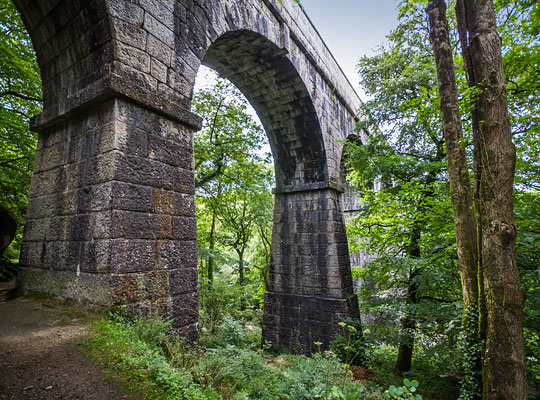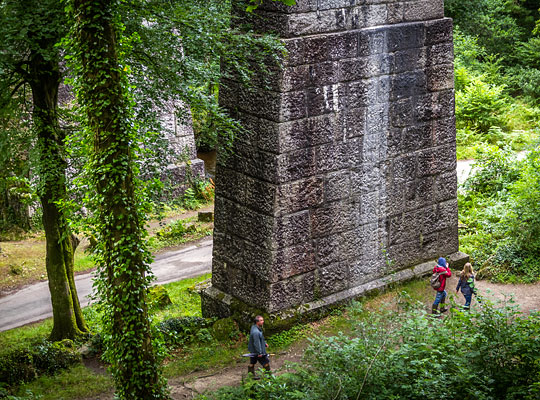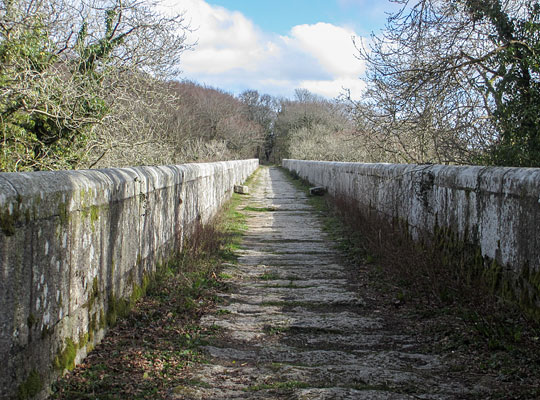Treffry Viaduct
Treffry Viaduct


















In 1829, Joseph Austin opened a new harbour at Par in Cornwall with the intention of exploiting the mineral wealth within the Treffry family’s estates which he had inherited 16 years earlier. To connect it to the high ground inland, he built a canal through the Luxulyan valley to Ponts Mill, from where a horse-worked tramway travelled up the Carmears incline and then levelled off to reach a terminus at the Bugle Inn near Mollinis.
The route required a high-level crossing of the River Par, accommodating a standard gauge track on sleepers which sat above a channel bringing water for the Fowey Consols mine on Penpillick Hill. The 12-ton foundation stone for this grand structure was laid by Austin on 13th March 1839 although, by this time, he had adopted the Treffry name. Construction took three years using 200,000 cubic feet of granite from his Carbeans and Colcerrow quarries, the blocks being hoisted into position under the superintendence of William Pease, Treffry’s land steward. Civil engineer for the scheme was James Meadows Rendel.
The viaduct comprises ten 40-foot spans supported by tapered piers measuring 26 feet by 10½ feet at their bases. It reaches a height of 98 feet and extends for 216 yards; the deck is 13 feet wide between the parapets. Costing £6,708 to complete, it was regarded at the time as the most advanced engineering project on the western peninsula. The central spandrel on its north-east side features the Treffry coat of arms with the inscription ‘Dum Deo Placuerit’ (‘Whyle God Wyll’).
The tramway opened in 1844, six years before Treffry’s death. In 1855, it was extended to Par Harbour. Other tramways were subsequently opened to link the quarries at Rock Mill and Orchard to Ponts Mill. These were largely rebuilt in the early 1870s under the auspices of the Cornwall Minerals Railway as part of a scheme to access ironstone deposits near Newquay. Involved was the construction of a new, heavily engineered line through the valley to facilitate steam operation, leaving the old one south of Ponts Mill and rejoining it at Luxulyan. Treffry Viaduct, which it passed beneath, continued to be used by horse-drawn traffic from Colcerrow Quarry until the 1930s, reversing at the junction with the old line – at the Par end of the structure – and then crossing it to reach the new alignment.
Although rather lost in trees, Treffry Viaduct remains a substantial feature of the local landscape and is free to be crossed on foot. It was designated a Scheduled Ancient Monument in May 1977.
(Goulding O’Neill’s picture, taken from Geograph, is used under this Creative Commons licence.)
(The NRM/SSPL pictures, taken from the National Railway Museum website, are used under this Creative Commons licence.)







